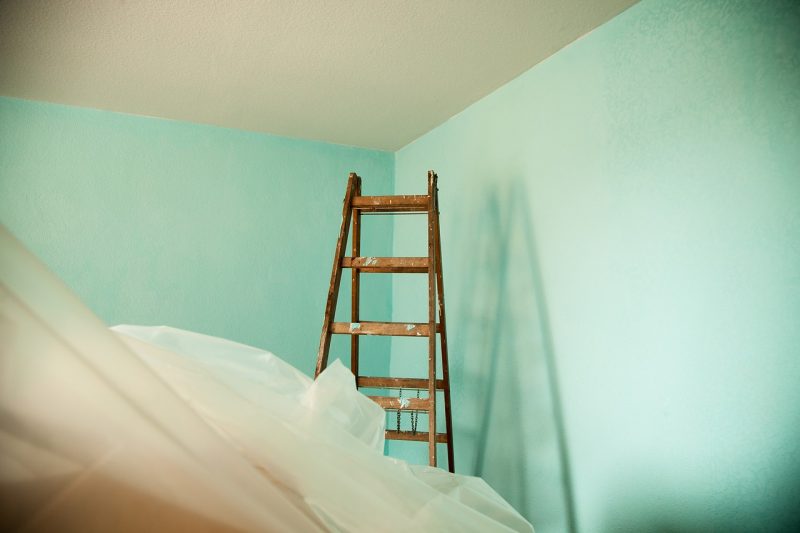Is it possible to apply one type of paint in all rooms in your house? Well, the answer is no. The kitchen’s conditions and use are not the same as in the bedroom, and the basement is not the same as the bathroom. Each area of the house has a different microclimate, and so it needs a different type of cover. Today our painting specialists will share with you what is the best type of product for every room of your place.
Read also: How to Prepare the Room for Painting
What Paint Should I Use For the…
…Bedroom and Living Room
There is a smaller amount of dirt and moisture in the bedroom and the living room than other areas in your home. The interior latex paint is the best choice for these rooms and comes in a great variety of colour and sheen. You can use paint with whatever finish you prefer – flat, matte, satin, or eggshell, according to the room’s design.
Check also: 10+ Ways to Avoid Rookie Mistakes When Painting a Room Part 1
…Kitchen
For your kitchen walls, you should look into the general category of interior paints. However, walls often get food and grease splashes, so you should avoid flat or matte finish, as they can be challenging to clean. While eggshell or satin sheens are commonly used, some people are concerned about maintenance and choose semi-gloss sheen for the kitchen area.
Read also: 10+ Ways to Avoid Rookie Mistakes When Painting a Room Part 2
…Bathroom
The humidity in bathrooms is relatively high, so it is wise to choose a wall finish that is easy to wipe down when needed. Choose paint with a satin or any glossier sheen – it has a tighter molecular structure than flat and matte finishes, and it will prevent moisture from penetrating the wall.
Check also: The 5 Most Common Mistakes When Planning a Renovation (and How to Avoid Them)

Use matte finish for the ceiling to create a visual illusion of a larger room
…Ceiling
There is a good reason why we usually paint our ceilings in flat white. Light colours reflect the light getting into the room, create a nice ambience and visually enlarges the space. Shinier paints create a space-limiting illusion, so using a flat or matte finish for your ceiling is better than a glossy one.
Read also: Why You Need to Hire a Professional Handyman
…Windows, Doors, and Cabinets
Pick oil-based paint to ensure excellent results when painting wood furniture, trims, doors and window frames. This type of paint dries much slower, but it has a smoother and sometimes glossier finish. The result is hard enamel which is more resistant to stains, scratches fingerprints, etc.
Check also: Is Summer the Best Season for Home Refurbishment
…Unpainted Drywall
Drywall has a porous, paper-like outer layer which soaks up liquids and moisture very unevenly and fast. To achieve a more balanced colour coat always use wallboard primer, before the paint. The primer comes in matte or flat sheen, and you can apply it directly onto the bare drywall.
Read also: The Duties of a Handyman
…Concrete Basement Walls
Most often than not, basements are quite humid places. Sometimes the problem is more severe, and there are visible leaks on the walls and ceiling of the room. If you have to deal with such issues, you need to seal all the visible cracks before painting with hydraulic cement. The paint you should use for the basement walls is called masonry paint. It can be thicker than regular interior paint, and it has elastomeric qualities. The paint contains binders that expand and contract with the wall’s movement during changes in meteorological conditions and structure settling. It is precisely this flexibility that helps prevent leaks in cellars and basements.
Check also: How to Repair Cracks in Your Toilet



